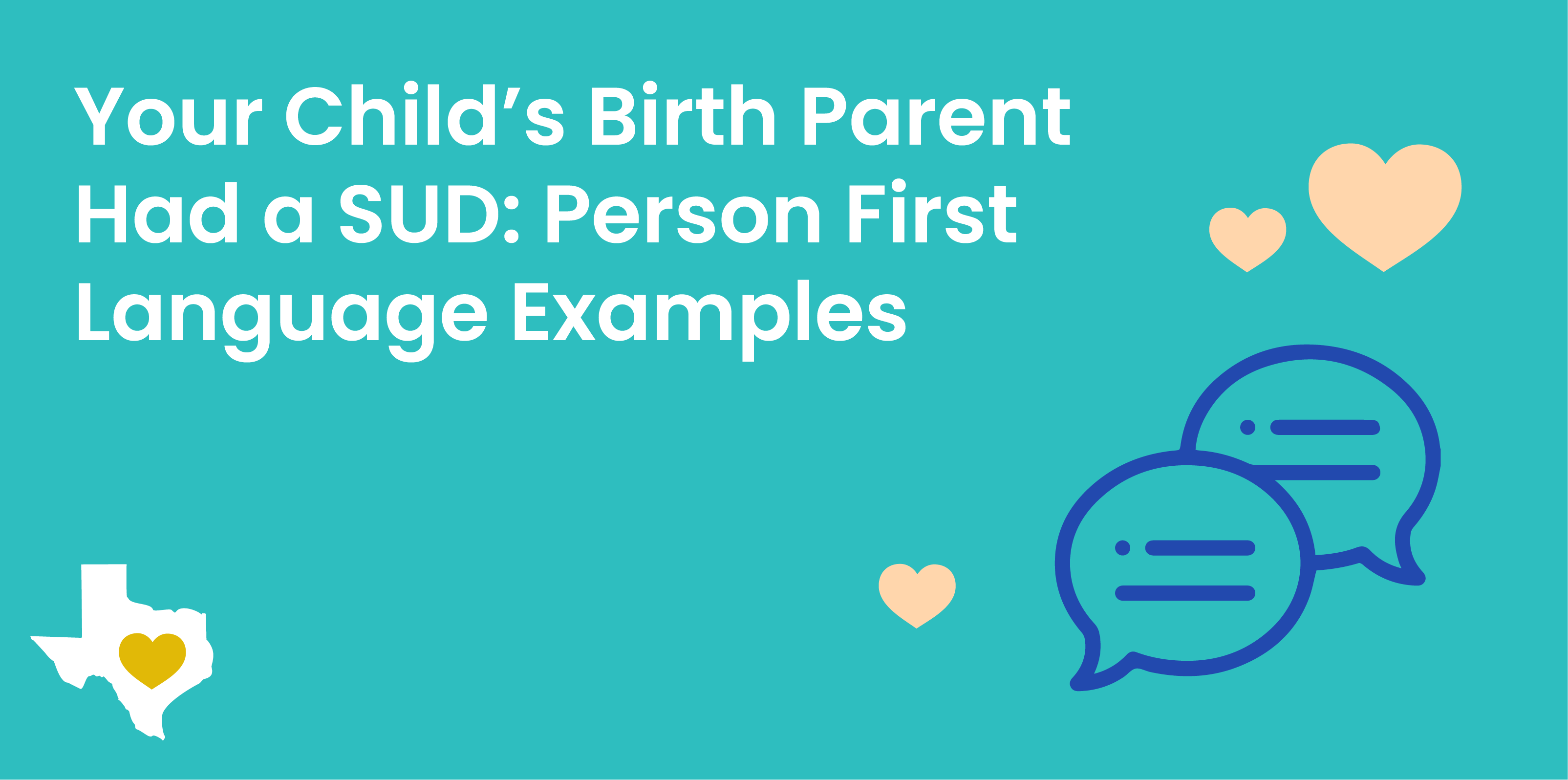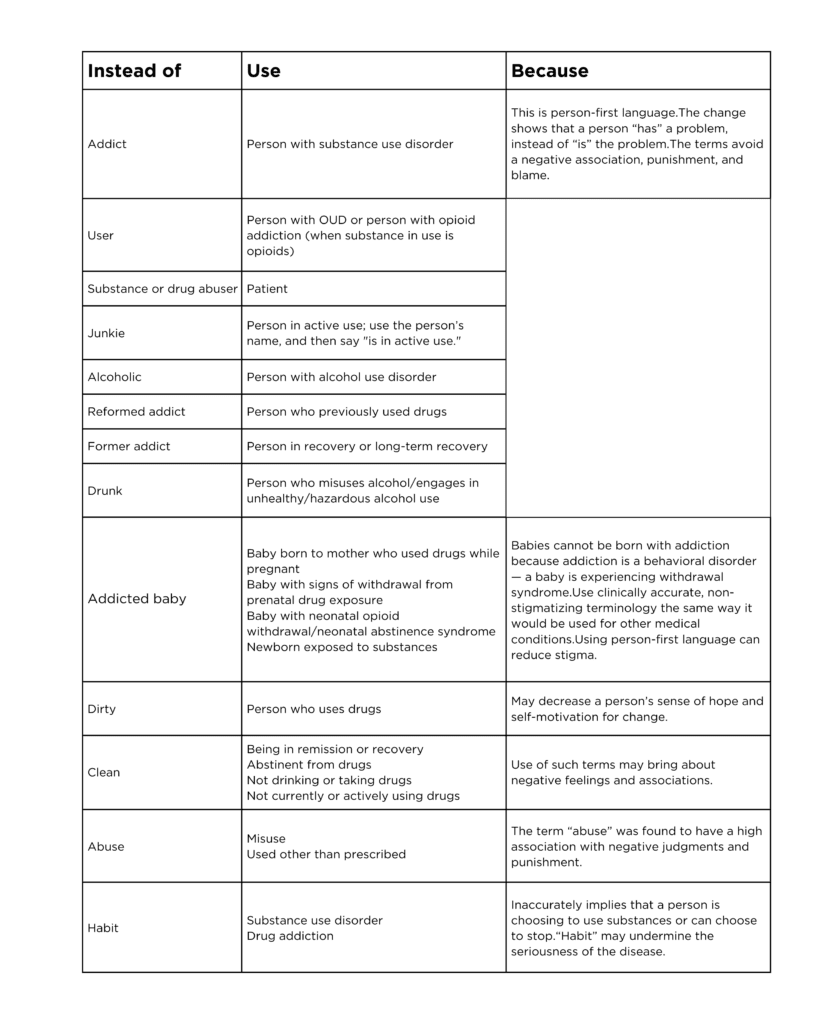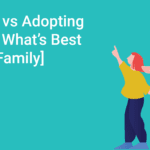
Understanding and discussing sensitive topics such as substance use disorder (SUD) can be hard in general, especially when it involves your child’s birth parents. Person-first language is essential in these conversations to ensure respect and compassion.
This article will explore the importance of person-first language, provide practical examples, and offer advice on explaining a birth parent’s SUD to your child.
What is Person-First Language?
Person-first language is a way of speaking that emphasizes the individual rather than defining them by their condition or circumstance. This approach promotes dignity and respect by recognizing that a person’s identity is not solely defined by their struggles or health issues.
For instance, instead of saying “an addict” or “a drug user,” person-first language uses terms like “a person with a substance use disorder.” This subtle shift in language can significantly impact how individuals feel about themselves and, importantly, when discussing things with your child, how others perceive them.
Importance of Person-First Language
Person-first language is more than just a way of speaking — it’s a mindset that reflects respect, empathy, and a commitment to reducing stigma. Here’s a deeper look into why using person-first language is important:
Promotes Respect
Using person-first language shows respect for the individual by acknowledging their humanity before their condition; it:
- Recognizes the Person: It ensures that people are seen first as individuals, not defined by their struggles or health issues.
- Enhances Dignity: Respectful language enhances the dignity of individuals by preventing their condition from overshadowing their personhood.
Reduces Stigma
Stigma is a significant barrier to recovery for those with SUD, and it damages the idea your child has of their birth parent. Person-first language helps to reduce this stigma in several ways. First, focusing on the person rather than the disorder shifts the conversation from one of blame and judgment to one of understanding and support. This can help in breaking down negative stereotypes and misconceptions about people with SUD.
Second, when the stigma is reduced, individuals and family members may feel less shame.
Encourages Empathy
Empathy is crucial in fostering supportive environments, and person-first language plays a key role in promoting this empathy:
- Fosters Understanding: Using compassionate language encourages others to understand and empathize with the experiences of those with SUD. It helps in viewing their struggles through a lens of compassion rather than judgment.
- Supports Open Dialogue: This language fosters an environment where difficult topics can be discussed more openly and sensitively. It helps to create a space where individuals feel heard and validated, which is essential for meaningful conversations about SUD.
Promotes Accurate Representation
Person-first language also ensures a more accurate representation of individuals with SUD. Terms like “addict” or “alcoholic” can be misleading and reductive, suggesting that the individual’s identity is solely defined by their disorder. Person-first language avoids these pitfalls by presenting a fuller picture of who they are.
It acknowledges the complexity of SUD, recognizing that it is a multifaceted issue involving physical, psychological, and social factors. This nuanced view can lead to a more effective and compassionate understanding of SUD.
Examples of Person-First Language
Here are some common terms and their person-first language alternatives:

Explaining SUD to Your Child
Discussing a birth parent’s SUD with your child can be delicate. Here are some tips to guide you through this conversation using person-first language:
1. Be Honest but Age-Appropriate
Tailor your explanation to your child’s age and maturity level. Younger children may need simpler explanations, while older children can handle more detailed discussions.
Example:
For a younger child: “Your birth parent had a hard time because they needed a special kind of medicine that wasn’t good for them.”
For an older child: “Your birth parent struggled with something called a substance use disorder. It means they had a hard time stopping the use of certain substances, which affected their ability to take care of you.”
2. Emphasize the Person, Not the Disorder
Ensure your child understands that their birth parent’s condition does not define them.
Example:
“Your birth parent is a person who had a substance use disorder. This means they had challenges, but it doesn’t change the fact that they cared about you.”
3. Encourage Questions and Offer Support
Create an open environment where your child feels comfortable asking questions and expressing their feelings.
Example:
“It’s okay to have questions or feel a certain way about this. We can talk about it anytime you need to.”
Work With an Adoption Partner That Supports Compassionate Language
Navigating the topic of a birth parent’s substance use disorder with your child is a complex but important task. Texas Adoption Center is here to support you. Our experienced professionals can provide resources and support to help you and your family navigate these sensitive discussions.
Contact us today at Texas Adoption Center to learn more about our services and how we provide the best care and understanding for children and birth parents.






